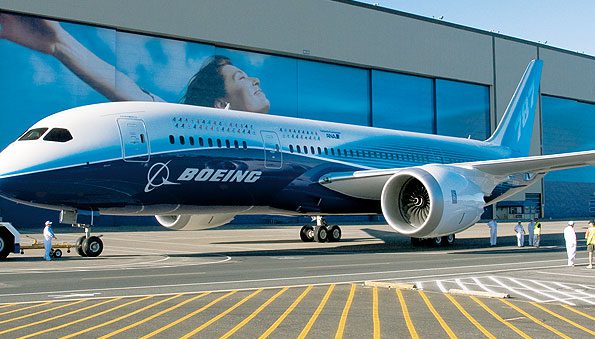October 24, 2022

A folded paper airplane will fly, at least for a while. But it can’t be steered or stay aloft any longer than the air around it will allow. Even with their breakthrough in 1903, the Wright brothers got their flying machine in the air for only twelve seconds.
Aircraft control systems make it possible to safely stay in the air, and they need reliable electrical power for the devices that make up those control systems. Aircraft have duplicate power sources to operate the devices on board, typically generating 115 VAC, 400 Hz, and 28 VDC.
Power originates from Integrated Drive Generators (IDGs) driven by the aircraft engines. The 400 Hz frequency allows smaller, lighter components to be used than those using 60 Hz power. The AC passes through duplicate Transformer Rectifiers (TRs) to provide 28 VDC for charging on-board batteries and other devices requiring DC.
Historically, on-board pneumatic systems draw power from thrust drawn off the engines, typically 4-6% of the propulsive energy. A higher efficiency architecture called More Electric Aircraft (MEA) looks to replace many of the hydraulic and pneumatic systems with electrically driven motors and pumps. The advantages are not just higher efficiency, but also reduced weight and fewer failure-prone mechanical components. Since thrust is not being bled from the engines, this is called a no-bleed system.

Hydraulic aircraft functions replaceable by localized electric motors in an MEA design (mililtaryembedded.com)
Electrical components in an MEA aircraft have different requirements. Aircraft power systems have long employed a constant-frequency AC power system, typically 400 Hz. Later aircraft designs, such as the Boeing 787 and the Airbus A380, use a variable-frequency system, where the power frequency varies with the engine speed that drives the generator.
As an example, the Boeing 787 uses an electrical system that is a hybrid consisting of 235 VAC, 115 VAC, 28 VDC, and ±270 VDC. The 235 VAC and the ±270 VDC sources are part of the no-bleed design with an expanded electrical system generating twice the electricity of previous airplane models.
Generators directly connected to the engine gearboxes operate at a variable frequency (360 to 800 hertz) proportional to engine speed. It’s a more efficient system because it does not require a complex constant-speed drive. As a result, the generators are more reliable, require less maintenance, and have lower spare costs than the traditional IDGs.
Applicable Standards
The Radio Technical Committee for Aeronautics (RTCA) publishes standard DO-160, covering a wide range of environmental tests required to confirm that airborne equipment will operate safely and reliably. Section 16 of DO-160 covers power input and outlines the limits and test procedures of the power system components.
DO-160 defines equipment categories to determine test levels and procedures.
- Categories A(CF), A(NF), A(WF) and A: These are equipment used on aircraft electrical systems where primary power is supplied from either a constant or variable frequency AC system, and where the DC system is supplied from TR units.
- For AC equipment: Category A(CF), A(NF) or A(WF)
- A(CF) is AC equipment used on aircraft electrical systems where primary power is from constant frequency (400 Hz) AC system.
- A(NF) is AC equipment used on aircraft electrical systems where primary power is from variable frequency AC between 360 – 650 Hz.
- A(WF) is AC equipment used on aircraft electrical systems where primary power is from a wider variable frequency AC between 360 – 800 Hz.
- For DC equipment: Category A
- For AC equipment: Category A(CF), A(NF) or A(WF)
- Category B: 14 V or 28 V DC equipment used on aircraft electrical systems supplied by engine-driven alternator/rectifiers, or DC generators where a battery is floating on the DC bus.
- Category D: 270 V DC equipment used on aircraft electrical systems where DC is generated from primary power supplied from either a constant or variable frequency AC system.
- Category Z: 28 V DC equipment that may be used on all other types of aircraft electrical systems applicable to these
Elite’s Aerospace Testing Experience
Elite’s decades of experience testing aviation and aerospace devices assures timely and authoritative results. Elite’s capabilities include:
- EMC, Electrical, and Environmental Stress Testing under one roof
- Elite provides one-stop for DO-160, Boeing, Airbus, and others.
- High Power Tests, including 200V/m and higher radiated susceptibility
- HIRF radar pulse testing up to 4,000V/m
- Lightning tests, per RTCA DO-160 Sec 22 (All waveforms at Level 5)
- 60+ years of MIL-STD expertise
The experts at Elite can answer your questions about DO-160 tests and the array of related tests needed for compliance with aviation standards.
